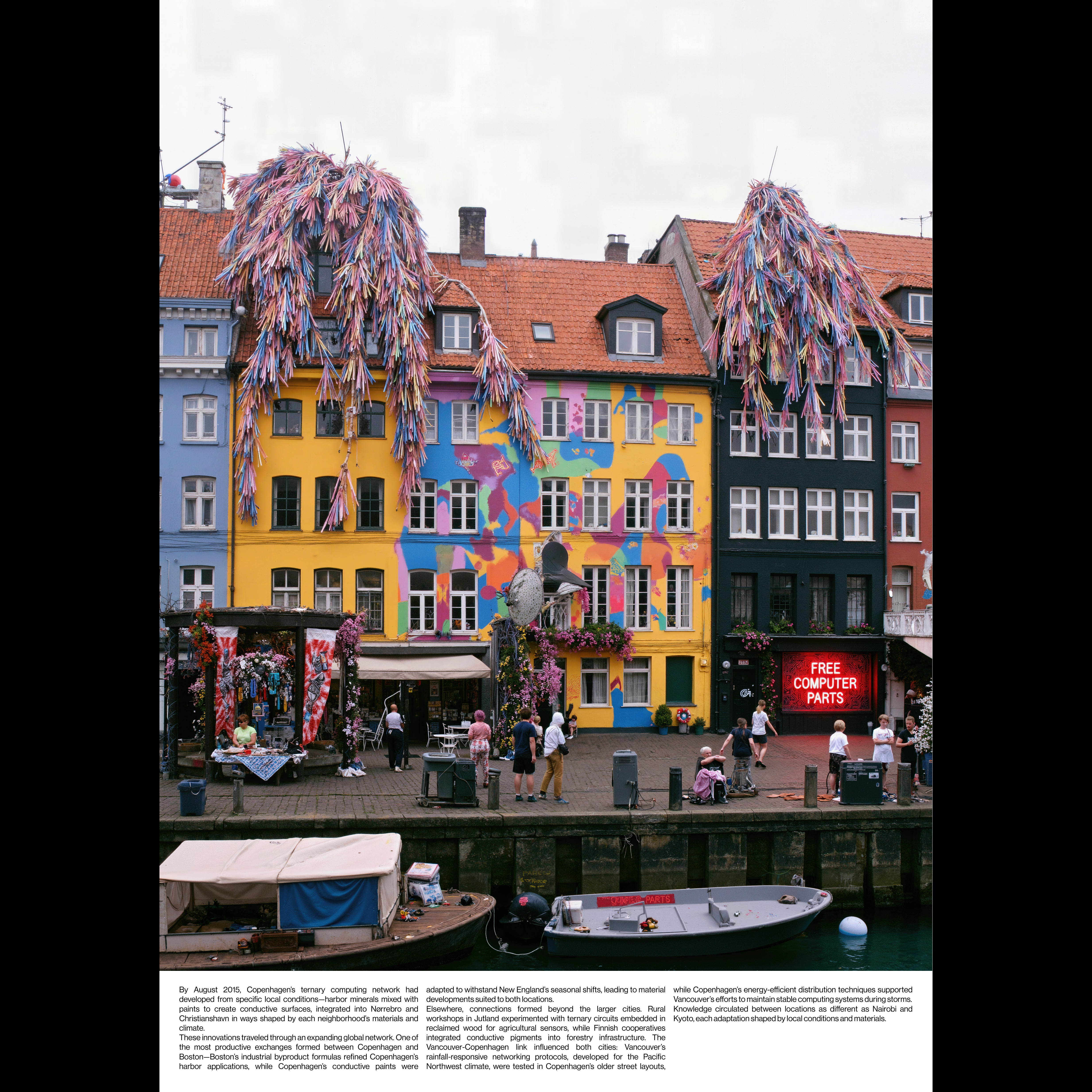By August 2015, Copenhagen’s ternary computing network had developed from specific local conditions—harbor minerals mixed with paints to create conductive surfaces, integrated into Nørrebro and Christianshavn in ways shaped by each neighborhood’s materials and climate. These innovations traveled through an expanding global network. One of the most productive exchanges formed between Copenhagen and Boston—Boston’s industrial byproduct formulas refined Copenhagen’s harbor applications, while Copenhagen’s conductive paints were adapted to withstand New England’s seasonal shifts, leading to material developments suited to both locations. Elsewhere, connections formed beyond the larger cities. Rural workshops in Jutland experimented with ternary circuits embedded in reclaimed wood for agricultural sensors, while Finnish cooperatives integrated conductive pigments into forestry infrastructure. The Vancouver-Copenhagen link influenced both cities: Vancouver’s rainfall-responsive networking protocols, developed for the Pacific Northwest climate, were tested in Copenhagen’s older street layouts, while Copenhagen’s energy-efficient distribution techniques supported Vancouver’s efforts to maintain stable computing systems during storms. Knowledge circulated between locations as different as Nairobi and Kyoto, each adaptation shaped by local conditions and materials.
DATA FLUENCIES: Rivulets April 18 – June 15, 2025 Opening reception April 18, 6–9pm Gallery hours Fridays, 4pm–9pm; Saturdays and Sundays, 12pm–6pm
Boston Cyberarts 141 Green Street Boston, MA, USA
